Original URL: https://www.theregister.com/2013/01/29/review_intel_335_240gb_ssd/
Review: Intel 335 240GB SSD
New NAND tech tweak treat
Posted in Personal Tech, 29th January 2013 12:02 GMT
Intel’s 520 and 330 range of 2.5in consumer SSDs are the product of its relationship with LSI SandForce. It's practically unheard of for Intel not to have a controller of its own but its reliance on SandForce has left it in the same boat as every other drive manufacturer using these controllers. Namely, they are all eagerly awaiting the next generation SF3xxx controller due sometime next year. For now, all these companies can do is tinker about with the firmware – if it’s custom written – or bring out drives using different NAND chips or chop prices as much as possible in relation to the latest drives.
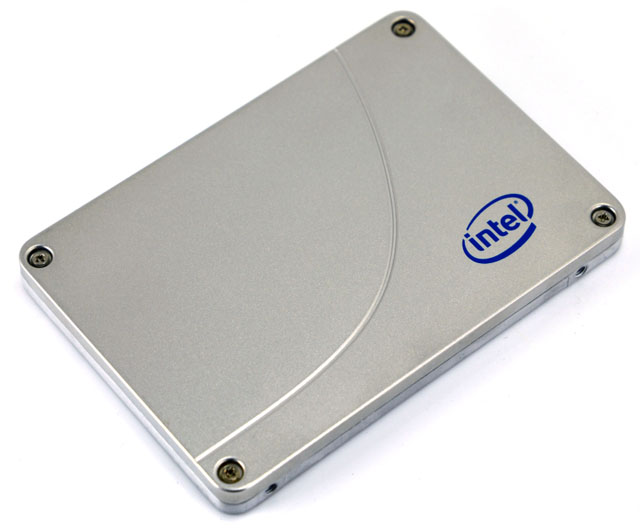
Intel's 335 SSD features new 20nm NAND but is only available in a 240GB capacity at present
In the meantime, old sparring partner Marvell has released its next generation controller that powers the Plextor M5 Pro series and Samsung has just released its next controller featured on the SSD840 Pro and 840. Still, Intel doesn't need to jump ship, play the waiting game or devise its own controller to improve its position in this highly competitive marketplace.
As a producer of NAND chips, Intel has a distinct advantage over the other Sandforce users as it can introduce new components into its storage line quicker than most of its rivals. The 335 drive (code name Jaycrest), is a case in point and is the latest model to join the company's burgeoning line of SSDs. I say 'drive' as, currently, the 335 family consists of a sole 240GB device.
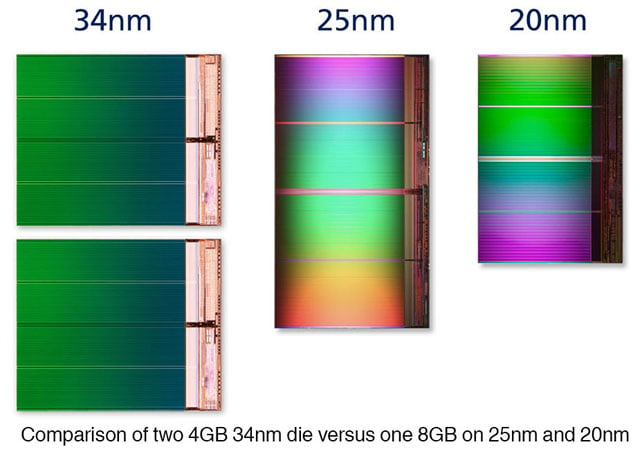
The dies have it
What separates the 335 from the 330 and the 520 SSD is that it uses Intel’s latest 20nm synchronous NAND technology rather than the 25nm NAND used previously. IMFT, Intel’s and Micron’s joint venture announced this 20nm NAND back in early 2011 and finally production yields and volumes are at a stage when the NAND can be built into a retail drive.
At the time of writing it seems Intel is content with just a single capacity 335 drive but future increases in yields may yet see other capacities emerge. The new NAND is an 8GB per 118mm² die part with an 8KB page size. This is the same as the 25nm design but supporting the ONFI 2.3 specification, which has a bandwidth limit of 200MB/s.
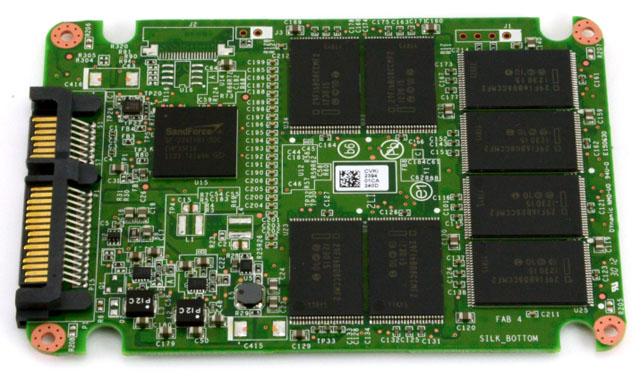
The dies may have shrunk but the 335 utilises a 9.5mm enclosure
What the new NAND does use, however, is a planar cell structure with Hi-K/metal gate technology which will allow for easier die shrinking than the standard architecture of previous generations of NAND. Another advantage of this technology is that it allows the die to be shrunk without increasing the interference and the associated downgrading of the endurance of the write/erase cycle. Intel claims that the endurance should be similar to the previous generation 25nm parts.
Performance tests
As always with its own SSDs, Intel picks the highest grade NAND from the production line and the 335 uses sixteen 16GB 29F16B08CCMF2 chips to reach its 240GB capacity. Well, it's 256GB actually but 7 per cent of the capacity is set aside for over-provisioning.
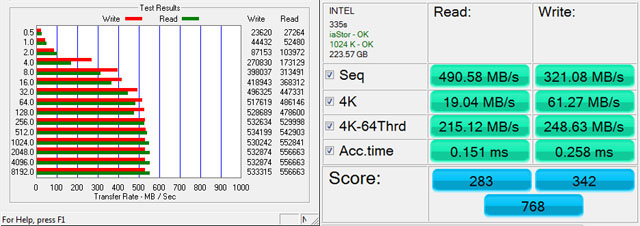
ATTO and AS SSD results
Intel quotes sequential Read/Writes for the drive at 500MB/s and 450MB/s respectively. These claims are very much on the conservative side going by the figures the drive produced when tested with the ATTO benchmark – 556MB/s for Reads and 533MB/s for Writes – which puts the 335 SSD right up there with the best of them.
Switching to the CrystalDiskMark benchmark on its default in-compressible data setting produced a Read figure of 468MB/s and a Write figure of 330MB/s. However, changing to the benchmark’s compressed data test showed up the usual increase in performance that the SandForce controller brings when handling this form of data; the Read figure rose to 496MB/s but as usual with this controller, the Write figure shot up, in this case to 490MB/s.
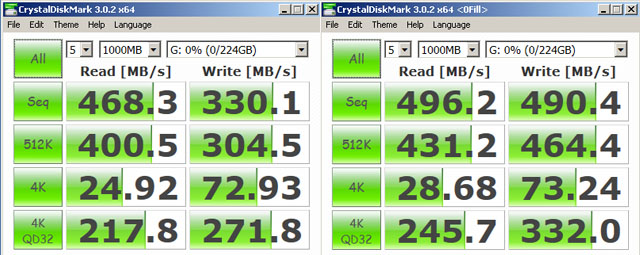
CrystalDiskMark results: In-compressible data (left), compressed data (right)
The 335 is built on a 9.5mm format, thus, in a stroke, excluding it from being used as an upgrade/replacement drive in thin notebooks or ultraportables. This does seem a bit odd on Intel’s part as these devices would be ideal candidates for the drive, but then again the company did do the same thing with the 330 series.
Odder still, regarding this form factor limitation, is that the die shrinkage also contributes to lower power consumption figures. Intel quotes 350mW active and 275mW idle which really gives the 800mW active, 600mW idle SSD 330 and 520 models a run for their money. Who wouldn't want to stuff one of these in an Ultrabook?
Oh, and yet another odd thing is that the mini CD bundled with the drive doesn’t contain any helpful software just warranty info and some instructions, so you have to download the rather excellent Intel SSD Toolbox from Intel’s site. The drive is also backed by a three year warranty.
The Reg Verdict
The 335 isn’t a major leap forward from the 330 in terms of throughput but it does have the advantage of using less power and an affordable price tag. In its current form and capacity though, the SSD 335 is more of a platform for Intel to introduce its latest NAND technology. Without a current in-house controller of its own for the consumer space, Intel, like other LSI SandForce users, is having to tread water and tweak while waiting for the next generation of the controller to appear. ®